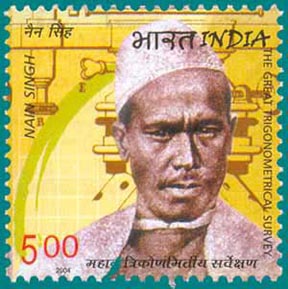
Saturday October 21 was the 187th birth anniversary of Nain Singh Rawat, a 19th century mountaineer and one of the first to explore the Himalayas for the British. Rawat was the first to survey Tibet, determining the exact location and altitude of the Tibetan capital Lhasa, and mapping the Tsangpo River.
Nain Singh Rawat was born in 1830 in Milam village in valley of Johar, at the foot of the Milam glacier where the river Goriganga River originates. The famed Bhotia explorers mostly belonged to this region.
In the early 19th century, European explorers were fascinated by the Central Asian terrain and wanted to understand the local customs. But given its challenges, they realized that they needed trained locals to help them in their quest and Rawat was one among the select group of local explorers under their wing.
After passing out of school, Nain Singh Rawat visited different places in Tibet with his father, learned the Tibetan language, customs and became familiar with the Tibetans. This knowledge of local customs and language helped Nain Singh Rawat in becoming an explorer.
In 1855, Nain Singh Rawat was recruited by German geographers the Schlagintweit brothers. His first exploration trip with the geographers was between 1855 and 1857. During this time Nain Singh Rawat travelled to Manasarovar Lake, Rakas Tal and further to Ladakh and Gartok.
In 1863, Nain Singh Rawat with his brother Mani Singh Rawat was sent for training in Dehradun which went on for two years. At the Great Trignometric Survey office Nain Singh Rawat and his brother received training on the use of scientific instruments and ways of measuring and recording.
In 1865, Nain Singh Rawat travelled nearly 2,000 km from Kathmandu to Lhasa and then to Manasarovar Lake and finally back to India. Rawat’s last and greatest journey was from Leh in Kashmir to Assam via Lhasa in Tibet.
As Europeans were not welcome everywhere, these explorers had to go under cover. Disguised as a Tibetan monk, Rawat walked from his home in Kumaon to places such as Lhasa, Kathmandu and Tawang. He would cover one mile in 2000 steps and measure each of them using a rosary.
And in order to maintain the secrecy, he hid a compass in his prayer wheel and disguised travel records as prayers.
Rawat’s first exploration trip was with the Germans between 1855 and 1857. He travelled to the Manasarovar and Rakas Tal lakes and then further to Gartok and Ladakh. It is said that his greatest journey was from Leh in Ladakh to Assam via Lhasa, from 1873-75.
Nain Singh Rawat died of heart attack while visiting Jagir, a village gifted to him by the British, in 1895. He was honored with several awards from the Royal Geographical Society. In June 2004, an Indian postage stamp was released dedicated to him.
-Sources Google doodles, Wikipedia






